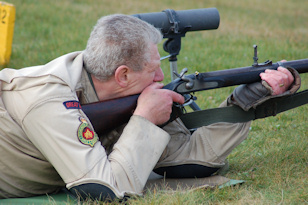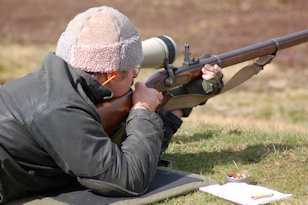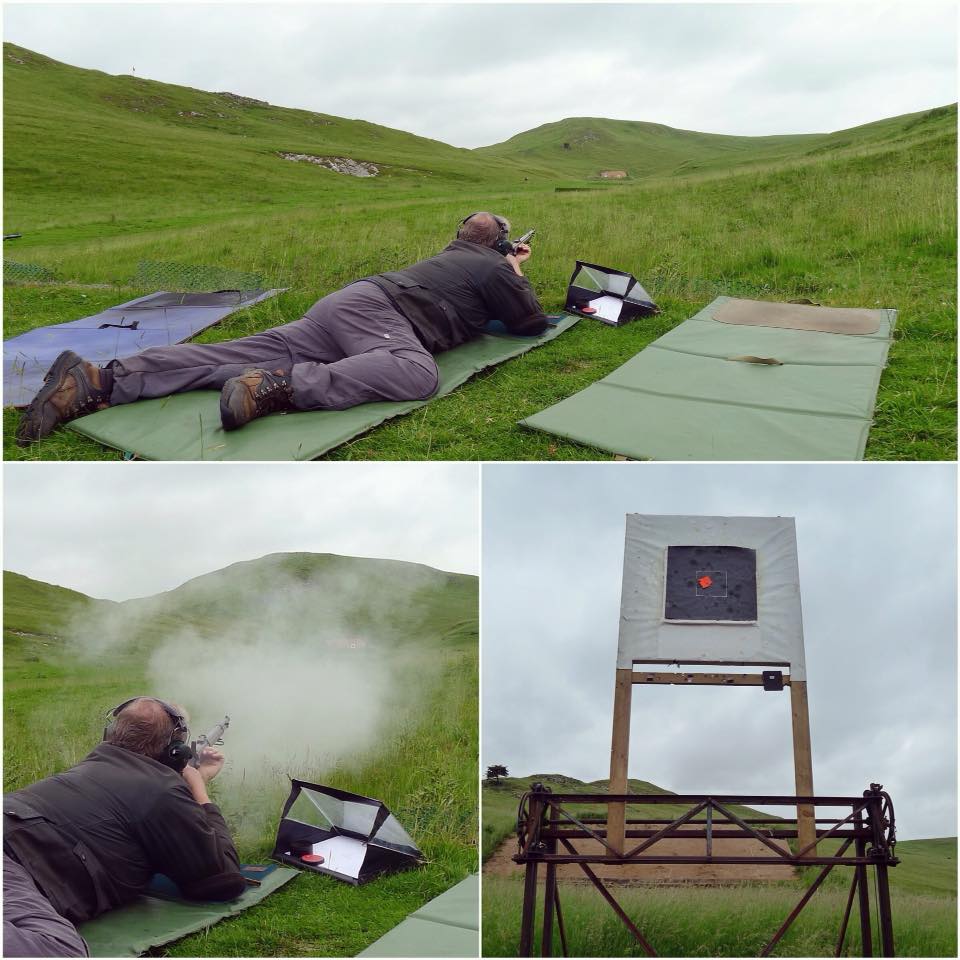You are here: Home > Marksmanship > Long Range Muzzle Loading
Written by: David Minshall
The military muzzle loading rifle (MMLR) may not be the first rifle that springs to mind for long range shooting, yet within Great Britain its use goes back to the origins of the National Rifle Association. The Volunteer Force established in Great Britain in 1859 was the catalyst for a great interest in rifle shooting and marksmanship skills. Significant factors in maintaining this interest were the formation of the National Rifle Association (NRA) late in 1859 and the sponsorship by Queen Victoria of a competition in the NRA Annual Rifle meeting first held in 1860.
The Volunteers were a military organisation and their arm of issue was the Pattern 1853 ‘Enfield’ Rifle Musket. Both the Volunteers and the NRA held many competitions which were fired with this rifle, perhaps the most notable being the first stage of the Queen’s Prize, with shooting out to 600 yards.
For many years the Muzzle Loaders Association of Great Britain (MLAGB) have continued this tradition of long range shooting with the Enfield rifle. Their match schedule includes National Rifle Championship matches at 200, 300, 500 and 600 yards. For those seeking a further challenge, the Long Range Rifles Branch (LRR) of the MLAGB Asquith Cup match is an aggregate fired at 600 and 800 yards with the Enfield.
Mention long range muzzle loading to most shooters today however and the classic .451 match rifle such as those by Whitworth, Henry, Gibbs and Rigby most likely come to mind.
For those accustomed to the management of the match rifle with all its finesse, the simplicity of the military muzzle loader will come as a joy. The careful cleaning between shots, the wads and paper patched bullets, and the studious attention to vernier adjustable sights can all be set aside. Anyone who shoots the Muzzle Loaders Associations International Committee (MLAIC) 100m Minie discipline has all the essentials necessary for a foray out to longer ranges. Powder, lubricated Minie bullets and percussion caps are all that’s needed; once loaded, elevation is set on the rearsight slider, one makes an assessment of wind strength, aims off if necessary and fires. Simple!
Well, actually it’s as simple as one wants to make it. So perhaps a review of typical equipment in use is called for.
The rifle most commonly used in MLAGB matches is the ‘two band’ Enfield. The Parker-Hale Pattern 1858 Naval Rifle is popular, as are original versions of this or similar Short Rifles. The common feature is the 33 inch barrel with 1 in 48 inch twist rifling. The Pattern 1853 Rifle Musket is however seen on the ranges and can perform well. One attribute perhaps accounting for the popularity of the shorter rifle is the sights; the rearsight is placed four inches further away from the eye and this can enable the shooter to gain a clear picture of the sights. There are probably as many original rifles used in MLAGB competition as reproduction, and no distinction is made between them.


Original two and three band Enfields on the firing point.
Note the difference in position of rearsights.
That of the shorter two band Enfield (pictured left) is positioned further away from the shooter.
Grease grooved Minie bullets are in general use. Some shooters have experimented with paper patched bullets and there have also been those that have made the hollow nosed bullets which William Metford had competition success with in the early 1860s. Paper cartridges don’t feature. Essentially there is no significant difference in loading between short range and long range. An increase in powder charge is generally made and to compensate for this some have modified base plugs on their bullet moulds to cast a thicker skirt on their Minie bullet.
Where the discipline really comes into its own is the ability to aim off to allow for wind. Sights are crude when compared to the match rifle, with just a simple slide for elevation and no windage adjustment. With the rainbow like trajectory of the typical 540-560 grain bullet, close attention to changing conditions is essential. Slight changes in head or tail winds and the bullet will drop short of or sail over the target. Point of aim may be several feet to the side of the target if the wind is strong; if one is lucky a clump of grass or other such feature in the butts may provide a point of reference.
MLAGB competitions are 3 sighting shoots and 10 match shots at all distances except 600 yards where there are 15 match shots. Targets used are the standard NRA(GB) type (and as used in the MLAIC Long Range World Championships for match rifle). All shooting is from the prone position with a two point military sling the only permitted support. Clothing is as per MLAIC disciplines.

Muzzle loading Enfield rifle target shooting at 400 yard, today.
The square targets used were those in use in the early 1860s by the NRA (UK).
This is at Thorpe Cloud range in Derbyshire.
One notable exception to the MLAGB competitions was a match run by the Nottinghamshire Rifle Association in the picturesque Derbyshire Countryside (above). Shooting was on a square target as used in the early days of the NRA and distances fired at are 200, 300, and 400 yards. Course of fire; one warming shot, one fouling shot and five match shots at 200 yards, followed by one sighting shot and five match shots at each of the remaining distances. Shooting from the prone position and no support (including a sling) was permitted.
On the national scene the NRA(UK) also hold long range matches for the Enfield in their Imperial Historic Arms Meeting (July) and the Trafalgar Meeting (October). A larger ‘historic arms’ target is used than in the MLAGB competitions.
This brief article has hopefully brought to the attention of shooters the greater possibilities of the military muzzle loader. Long range shooting with these rifles is a challenging discipline, frustrating at times yes, but also immensely satisfying. Beware it is also addictive! Give it a try.